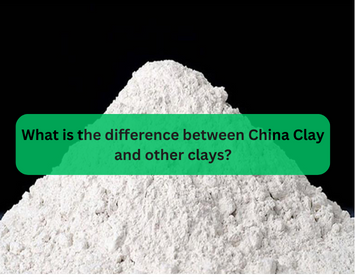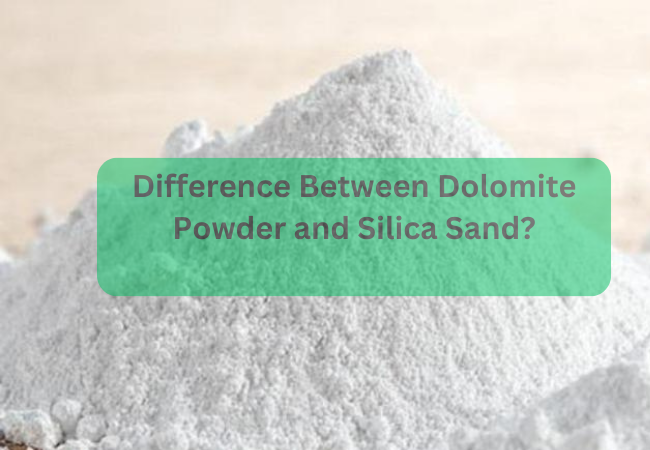- ISO 9001:2015 Certified Company
- +91-9672985402
- info@vasundharamicron.com
What is the difference between China Clay and other clays?

What benefits does talc bring to filler masterbatch?
September 18, 2023
Can talc powder be used for skin irritation or rashes?
October 2, 2023Clay, a versatile natural resource, has been a vital component in various industries for centuries. Among the various types of clay available, China Clay, also known as kaolin, stands out due to its unique composition and properties. In this blog post, we'll explore the differences between China Clay and other clays, highlighting their characteristics, applications, and benefits.
The Nature of China Clay (Kaolin)
China Clay, or kaolin, is a fine white or light-colored clay primarily composed of the mineral kaolinite. Its name originates from the region where it was first discovered in China. As trusted China Clay Suppliers in India, one of the most distinguishing features we can definitely assure you of this mineral is its exceptional whiteness and fine particle size. This makes it an ideal choice for a wide range of applications, from ceramics to cosmetics.
Distinguishing China Clay from Other Clays
Composition and Mineralogy: China Clay predominantly consists of kaolinite, a layered silicate mineral. This gives it a unique structure with stacks of thin sheets, providing excellent properties for various industries. Other clays, such as bentonite and montmorillonite, have different mineral compositions, resulting in distinct properties and applications.
Color and Texture: The inherent whiteness of China Clay sets it apart from many other clays. Its light color makes it a sought-after ingredient in applications where color purity is essential, such as ceramics and cosmetics. On the other hand, other clays may exhibit a broader range of colors due to different mineral content.
Particle Size: China Clay particles are smaller and finer compared to other clays. This fine particle size contributes to its smooth texture and makes it an excellent filler for various products, enhancing properties like opacity and viscosity.
Plasticity and Workability: China Clay exhibits lower plasticity compared to some other clays. While it may not be as malleable for sculpting, its lower plasticity makes it ideal for applications where shaping precision and stability are required, such as ceramics and paper coatings.
Applications and Benefits
China Clay (Kaolin)
Ceramics: China Clay is a staple in the ceramics industry due to its ability to enhance plasticity, reduce shrinkage, and improve workability in clay bodies. Its whiteness contributes to the bright colors and intricate designs of porcelain and fine china..
Paper Industry: In paper production, China Clay is used as a filler and coating material. It improves paper's printability, opacity, and smoothness, enhancing the quality of printed materials.
Cosmetics and Pharmaceuticals: China Clay is gentle on the skin and is used in cosmetics and skincare products for its absorbent and mattifying properties. In the pharmaceutical industry, it serves as an excipient, aiding in tablet formulation and controlled release.
Other Clays
Bentonite: Bentonite is known for its swelling properties and ability to retain water. It's used in industries like foundry, drilling, and construction due to its strong binding capabilities.
Montmorillonite: This clay is highly absorbent and expands when wet. It finds applications in industries like agriculture, pet care products, and environmental cleanup due to its absorption capacity.
Kaolinite-rich Clays: Clays rich in kaolinite, similar to China Clay, are used in various applications. However, the whiteness and fine particle size of China Clay make it stand out in industries that prioritize these qualities.
Conclusion
With all the above information, Vasundhara Micron conclude that China Clay with its distinctive qualities of whiteness, fine particle size, and unique mineral composition, occupies a special place in industries ranging from ceramics to cosmetics. While other clays have their own benefits and applications, China Clay's specific attributes make it an indispensable ingredient for products that demand precision, purity, and performance.
Incorporating China Clay into various applications not only enhances product quality but also highlights the remarkable versatility of this natural resource. As industries continue to evolve, the distinct qualities of China Clay will undoubtedly continue to play a significant role in shaping their advancements.




